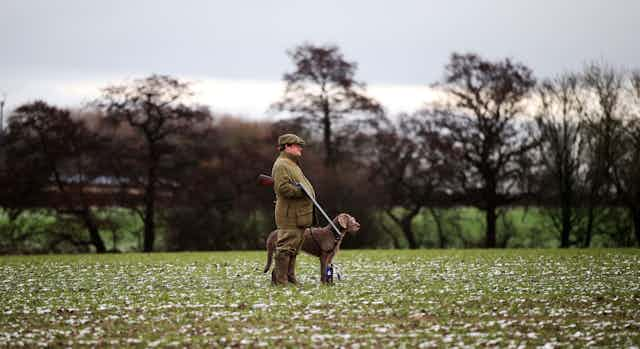Lead is a toxic metal and for that reason it has been removed from petrol, paints and drinking water pipes. But it remains popular in the manufacture of bullets and shot for game hunting and target shooting, despite the effects it can have on wildlife and the risks it could have to human health.
In the UK, lead shot has long since been outlawed for use over wetlands, as grain-eating ducks and geese would mistake the small shot for seeds and grit. Yet it is still used throughout the countryside for other forms of hunting. While research from within the UK is scarce, evidence from elsewhere suggests that birds who feed on grains over fields can collect and eat this lead shot. Also, predators and scavenger species such as crows and raptors can accumulate lead and die thanks to feeding on lead ingested by their prey, or game that was shot but not recovered. This, in turn, harms recovering populations of birds of prey such as red kites.

To put this in perspective, if a commercial shooting estate were to offer a single day hunting pheasant with an expected bag of 200 birds and the hunters were half decent shots, they might expect a 1:3 kill to cartridge ratio. Using a standard game load of 32 grams of No. 5 lead shot, each cartridge containing around 248 pellets, that represents just over 25kg of lead shot. In the UK upwards of 30m game birds are released each year, with about half of these being shot and bagged and some being wounded and lost or die from other causes. While we could argue about how best to estimate the amount of lead spread in the UK countryside – it is clear that it’s a lot.
Some conservation organisations, along with campaigners like Chris Packham and Mark Avery, have lead shot in their sight. With evidence that some commercial hunters are not sticking to the current laws the pressure has been building on shooting organisations to rise to the challenge. Unfortunately this has not happened, and instead the call for a ban on lead ammunition has been received with scepticism and as a general attack on shooting and hunting.
Some of this scepticism is borne out of a view that UK-based hunting is unique, with a focus on old “sporting guns” and “driven” pheasants – a form of collective hunting where some hunters flush birds with dogs forward to waiting guns. There is a a belief that non-lead shot is not a fit replacement for this style of hunting, and while ballistic tests suggest otherwise it could just be people dont want to change and like using old guns that cannot be used with modern shot ammunition.
The organisations who represent UK hunters and shooters could not be more clear that they support the status quo of no further regulation. Fair enough, perhaps, but it does point to a lack of belief in what is now a robust body of evidence of lead impacts on wildlife.
What hunters themselves think
However, a new study published in the British Ecological Society journal People & Nature does not focus on the views of hunting and conservation organisations, or vocal personalities on social media. Instead, it uses quantitative social sciences to examine the diversity of experiences and views on hunting ammunition among UK hunters.

Across that diversity, two statistically significant groups emerged. The first is the “status quo” group, who the hunting organisations champion. This group is reluctant to switch, is not convinced about the suitability of lead-shot alternatives and is not convinced by the science that birds suffer and die from spent shotgun ammunition.
The second group was “open to change”, and some conservation organisations and activists would have you believe this group does not exist. This group accepted that lead is likely to poison wild birds and wildlife, were very happy to use non-lead ammunition and importantly did not feel that any phase-out of lead hunting ammunition would lead to the demise of shooting and hunting in the UK.
The two groups did agree on a few things, including that lead is indeed toxic, which means there appears to be more scope to resolve the conflict than the recent breakdown of government-convened talks would have us believe.
Questions remain over what role the “open to change” group and hunting organisations could play in reaching out to the “status quo” to achieve a future with less lead and more respect for quarry species. In the meantime this new research is to be welcomed for taking a less polemic bridge-building approach to resolving conflicts in the British countryside.

